Pakse
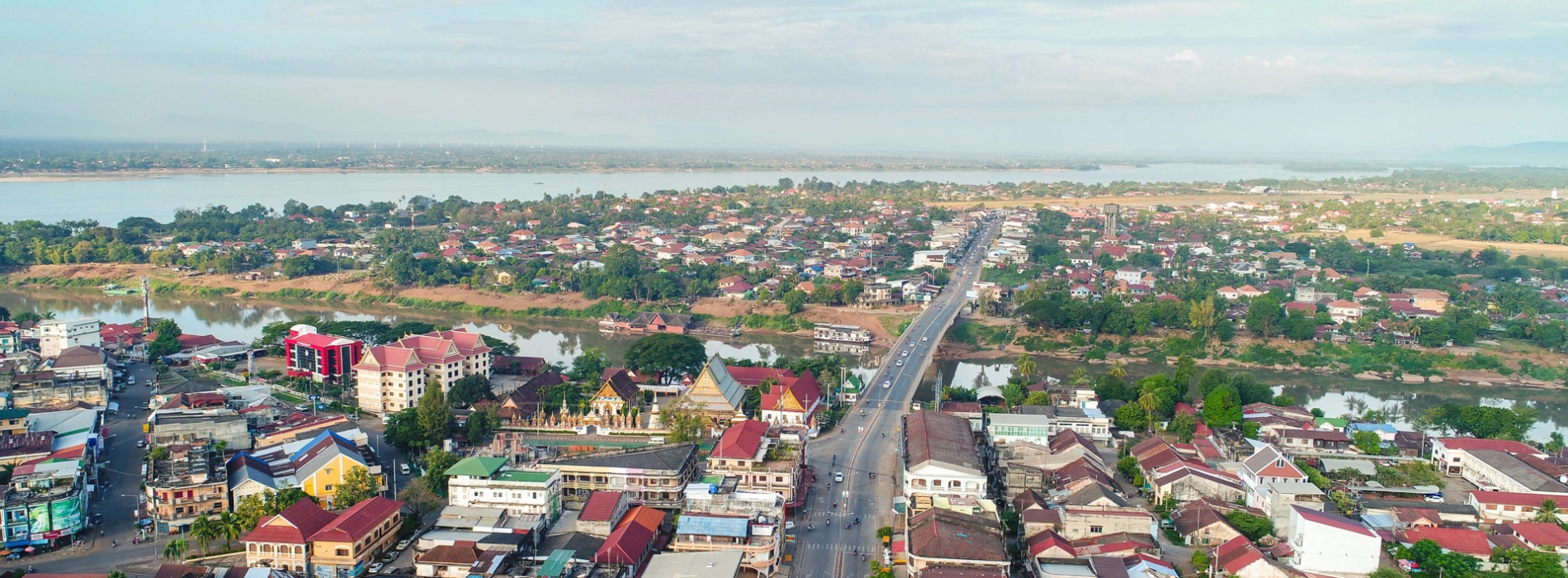
Pakse, situated in the southern reaches of Laos along the Sedone River in Champasak Province, serves as a significant urban center with both historical and contemporary importance. As the provincial capital, Pakse has evolved into a pivotal economic and cultural hub. Pakse continues to play a crucial role in the southern Lao economy, supported by sectors such as agriculture, trade, and an emerging tourism industry. With a well-developed infrastructure, including an airport and essential transportation networks, Pakse offers a blend of Lao and French influences in its architecture and cultural practices. Overall, Pakse stands as a vibrant and diverse destination, embodying the essence of southern Laos through its history, economy, cultural heritage, and natural beauty. Let's explore this special city with Asia King Travel
Pakse has a rich history shaped by various influences over the centuries. The region's historical narrative includes elements from the Khmer Empire, French colonial rule, and the subsequent developments as Laos gained independence.
During the French colonial period in the late 19th and early 20th centuries, Pakse emerged as a strategic center for administration, trade, and transportation. The French utilized the Mekong River and its tributaries for trade routes, and Pakse, located along the Sedone River, played a significant role in this network. The city thrived as an administrative hub under French rule, contributing to its urban development and economic importance.
Today, Pakse stands as a testament to its diverse historical influences, with remnants of ancient civilizations, French colonial architecture, and the more recent developments of an independent Laos. The city's history is interwoven with the broader historical tapestry of Southeast Asia, making it a fascinating destination for those interested in exploring the cultural and historical heritage of the region.
Pakse boasts a variety of attractions that appeal to visitors seeking cultural, historical, and natural experiences. These attractions collectively showcase the diverse of Pakse, from ancient temples and cultural heritage to natural wonders and vibrant local markets. Visitors can immerse themselves in the unique blend of history, culture, and natural beauty that defines this southern Laos city and its surroundings.
Champasak Historical Heritage Museum
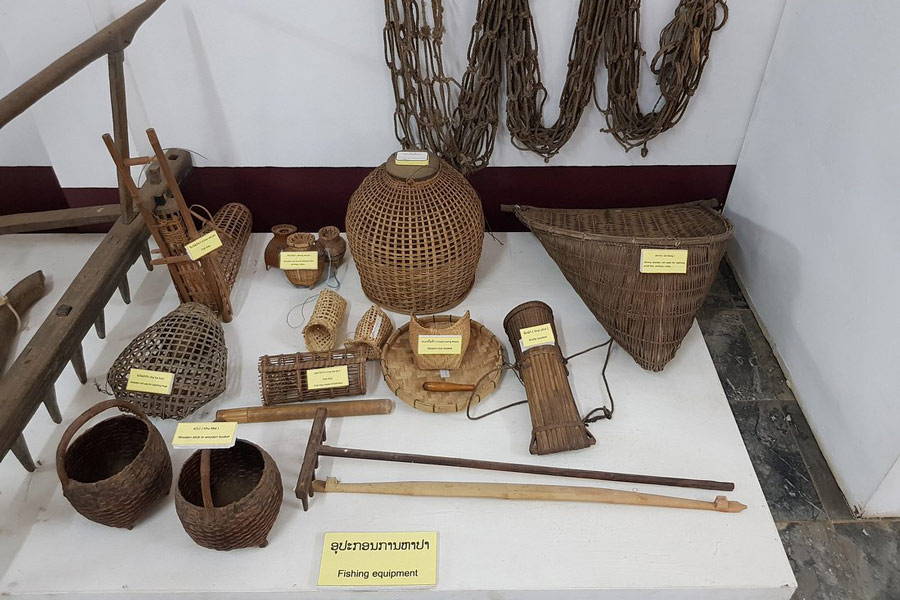
Heritage artifacts in the museum
Located in Pakse, this museum provides insights into the history and culture of Champasak Province. Exhibits include artifacts, photographs, and information about the region's heritage.
Wat Luang
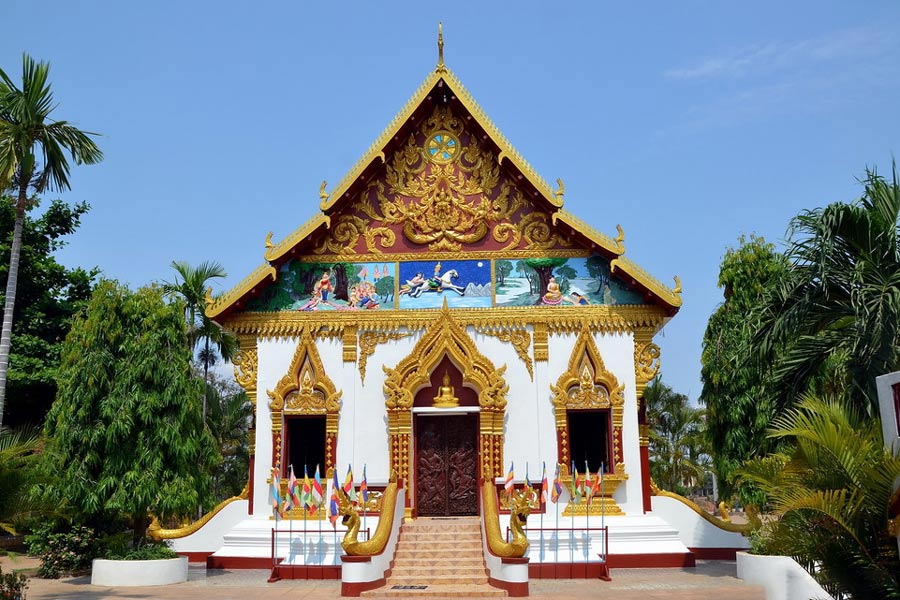
Wat Luang is the largest and most beautiful temple in Pakse
Wat Luang stands as the grandest and most exquisite temple in Pakse. Despite its classification as a temple, it emanates a distinctive Buddhist ambiance. Renowned for its beauty, Wat Luang encompasses a vibrant temple complex that includes a school offering Buddhist courses for monks. Considered a hidden gem in Pakse, this colorful sanctuary remains largely undiscovered by tourists, making it a precious and lesser-known attraction in the city.
Wat Phou Salao
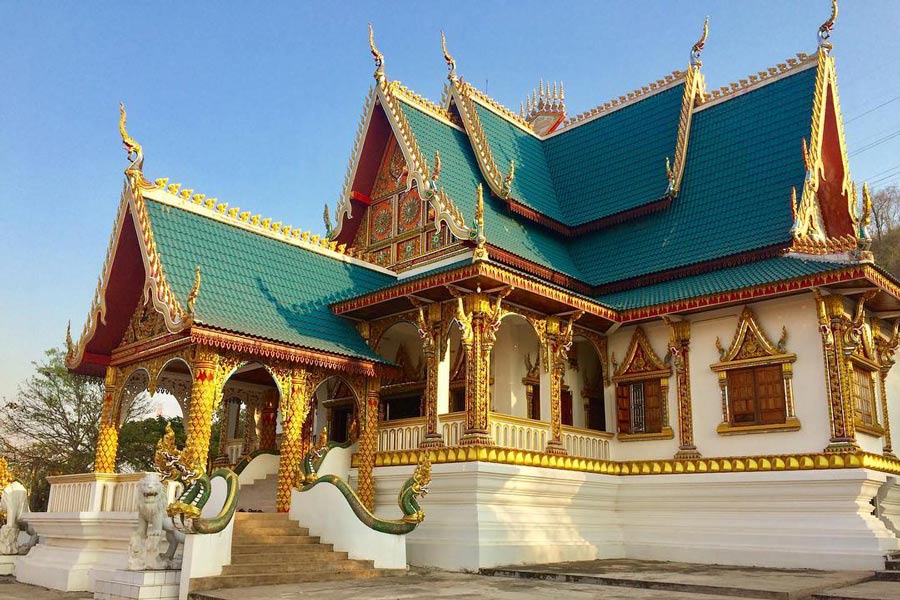
Wat Phou Salao is not only a religious site but also a place where locals gather
Perched on Phou Salao Hill, Wat Phou Salao near Pakse boasts a striking golden Buddha statue, visible from Pakse and offering panoramic views of the Mekong River. This Buddhist temple serves as a serene and culturally significant destination accessible by road, attracting visitors seeking spiritual reflection and picturesque landscapes in southern Laos.
Pakse Bridge
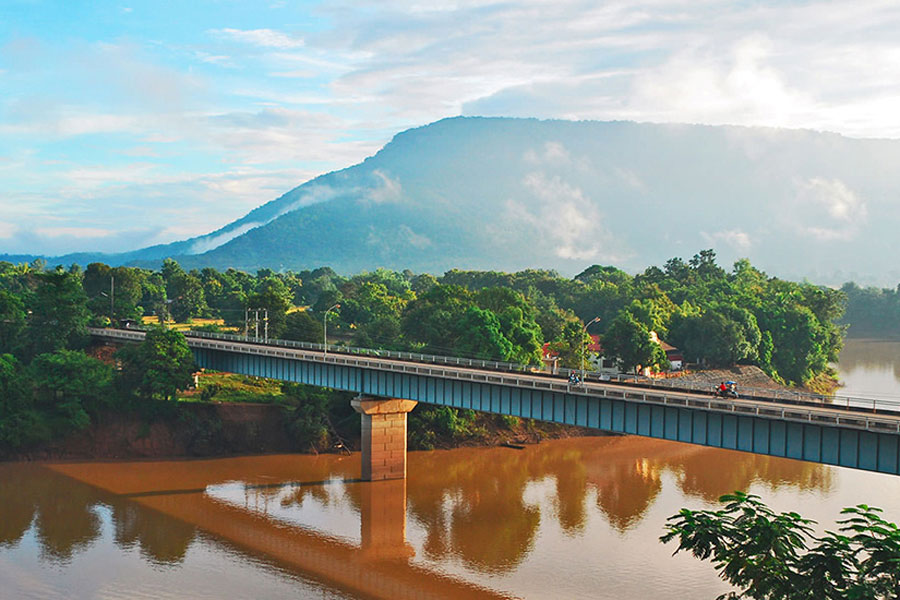
The bridge is a vital part of the region's infrastructure
Also known as the Lao-Japanese Friendship Bridge, this iconic bridge spans the Mekong River and connects Pakse with the neighboring province of Thailand. The bridge provides scenic views and is a popular spot for photographs.
Golden Buddha (Phou Salao)

The Golden Buddha stands as an iconic and revered symbol in the region
Perched on a hill across the Sedone River, the Golden Buddha offers panoramic views of Pakse and the surrounding landscape. The large, gilded statue is a peaceful and reflective site.
Dao Heuang Market

The Dao Heuang Market is a bustling and vibrant market in Pakse
For a taste of local life and a variety of goods, the Dao Heuang Market in Pakse is a vibrant market where visitors can explore and shop for traditional Lao products, including textiles, handicrafts, and fresh produce.
Accommodation:
Local Transportation:
Food and Dining:
Activities and Entrance Fees:
The best time to visit Pakse is during the cool and dry season from November to February, characterized by pleasant temperatures ranging from 20°C to 30°C and minimal rainfall. This period offers ideal conditions for exploring cultural sites and enjoying outdoor activities. While the hot season from March to May is also viable, the wet season from June to October brings heavy rainfall and potential travel disruptions, making the cool and dry season the preferred time for a visit.
Getting to Pakse typically involves air travel, as the city is well-connected by its international airport, Wattay International Airport (PKZ).
By Air
By Bus: Pakse is well-connected by road, and buses operate from various cities within Laos. You can find long-distance buses from Vientiane, Savannakhet, and other major towns to Pakse. The journey time and conditions can vary, so it's essential to check schedules and choose reputable bus services.
By Boat: If you're traveling from the southern region of Laos, particularly the Four Thousand Islands (Si Phan Don), you can take a boat to Pakse. This scenic journey along the Mekong River provides an alternative and unique transportation option.
Road Trips: If you prefer a more flexible and independent mode of travel, you can rent a car or motorbike. The road network in Laos connects Pakse to various destinations, providing the opportunity for a road trip adventure.